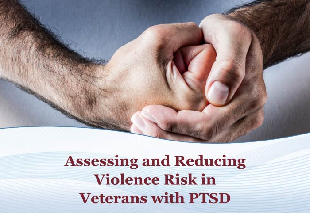PTSD: National Center for PTSD
Assessing and Reducing Violence Risk in Veterans with PTSD
Continuing Education
This section brings together free in-depth Continuing Education resources for the Professional community concerned with trauma.
Assessing and Reducing Violence Risk in Veterans with PTSD
- Date Created: 02/10/2020
- Time to Complete: 1 hour
- Credits: ANCC, APA, ASWB, ACCME, ACPE, Other Orgs
- Skill Level: Intermediate
- Course Series: PTSD 101
 Author(s):
Author(s):
Description
Although PTSD in Veterans is associated with a higher risk of violence, the vast majority of Veterans with PTSD report no violence or problems with aggression. Concurrent factors and specific PTSD symptoms must be considered. This course provides an evidence-based approach to improving clinical assessment and management of violence risk in Veterans with PTSD.
This PTSD 101 course describes prevalence of violence in Veteran populations, noting risk factors that have shown a consistent empirical association with violence, such as alcohol misuse. Psychosocial protective factors that have been shown to be related to reduced risk of aggression are also presented. Risk assessment tools are presented to structure clinical decision making.
Goals and Objectives
- Describe empirical literature on violence in Veteran populations.
- Discuss the intricate links between PTSD, co-occurring factors, and aggression.
- Discuss how psychosocial rehabilitation can help with management of violence in Veterans.
- List at least two benefits of using a systematic procedure to assess risk of violence in Veterans.


























